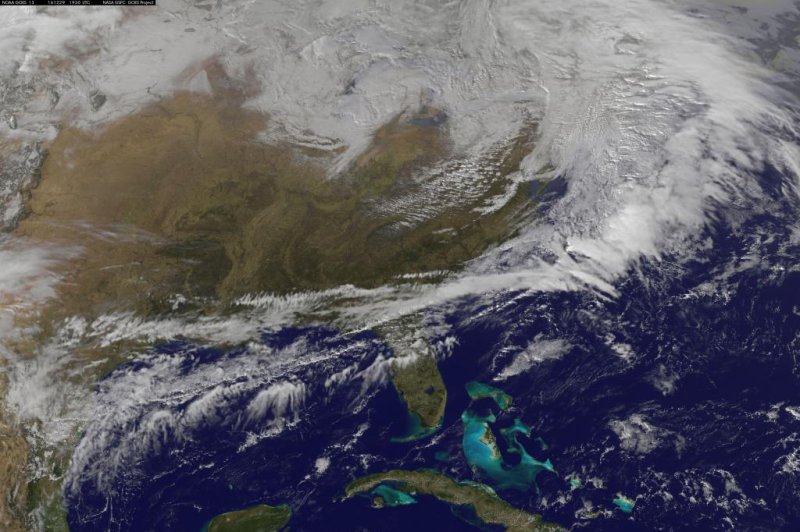NASA scientists will deploy a combination of ground instruments and research aircraft to study the internal dynamics that govern the distribution of snow within snowstorm clouds. Photo by NASA
Jan. 14 (UPI) -- For the next several weeks, beginning this weekend, NASA scientists will be on the lookout for East Coast snowstorms.
The team of snow-chasers will use a variety of ground instruments and two research aircraft to study the insides of snow clouds and internal dynamics of big snowstorms. The so-called Investigation of Microphysics Precipitation for Atlantic Coast-Threatening Snowstorms, or IMPACTS, project will be the first detailed survey of East Coast snowstorms in more than three decades.
Researchers hope the IMPACT project, which is scheduled to commence on Jan. 14, will improve snowstorm prediction models.
"Some places having two feet of snow, and other nearby places having one inch -- that's a big forecast problem," IMPACTS principal investigator Lynn McMurdie, an atmospheric scientist at the University of Washington in Seattle, said in a NASA news release. "We're trying to figure out what happens and how to represent that better in our weather models."
Snowstorms often feature snow bands, narrow strips of dense snow clouds that produce heavy snowfalls. Scientists hope NASA's P-3 Orion research aircraft can help them understand how and why these snow bands form.
The instruments on the wings of P-3, including state-of-the-art microphysics probes, will measure the shapes and sizes of snowflakes, and also record surrounding weather conditions, including temperature, water vapor levels and wind speeds. The aircraft will also release dropsondes, airborne sensors that will study the changing atmospheric conditions as snow falls from the clouds to the ground.
Several ground instruments will be positioned to study snow clouds and falling snow flakes from below, while a second plane, NASA's ER-2, will be used to survey snowstorm clouds from above.
"IMPACTS will fly six remote-sensing instruments on the ER-2, effectively making the aircraft a mini-satellite," said Scott Braun, research meteorologist at NASA's Goddard Space Flight Center and IMPACTS' deputy principal investigator.
ER-2's sensors -- including advanced radar, lidar and microwave radiometer remote sensing instruments -- will measure the vertical distribution of raindrops, snowflakes and ice particles in the snow clouds below.
"All this information is important and complementary," said Goddard researcher John Yorks, deputy principal investigator on the IMPACTS project. "The data collected directly in the cloud by the P-3 will inform how we interpret the remote sensing data from the ER-2 and help us understand the structure and evolution of the snow bands."
The two research aircraft will be flown in coordination so that their instruments will be simultaneously studying the same snow clouds and snowflakes from above and below.
By studying the mechanisms that control the distribution of snow within snow clouds and snowstorms, scientists hope to improve models designed to simulate the behavior of snowstorms -- and ultimately to improve the accurate of snow accumulation forecasting.















